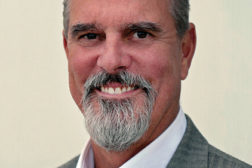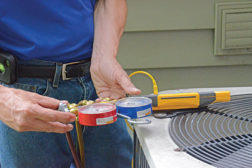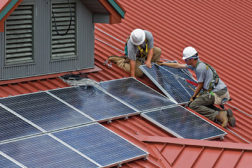Home » renewable energy
Articles Tagged with ''renewable energy''
Dec. 23, 2013: Energy and Sustainability Industry Conference Set for February
Conference Will Discuss Renewable Energy, Developing Net Zero and Positive Energy Buildings
December 23, 2013
Congress Unlikely to Renew HVAC Tax Provisions in 2013
25C, 179D, Other HVAC-Related Tax Provisions Set to Expire on Dec. 31
Read More
ACEEE Releases 'State Energy Efficiency Scorecard'
Massachusetts, California Earn Top Spots on Energy-Efficiency List
December 16, 2013
Dec. 13, 2013: Maryland Announces Competitive Grants for Clean Energy Innovators
Program Seeks ‘Game Changing’ Renewable and Clean Energy Generation and Storage Technologies
December 13, 2013
Dec. 10, 2013: President Directs Federal Agencies to Use More Renewable Energy
Goal Supports Homegrown Energy Produced by American Workers
December 10, 2013
Solar Inverters Becoming Cheaper and Smarter
Market Not Yet Fully Mature, Despite Significant Progress in Recent Years
Read More
Dec. 6, 2013: Renewable Energy to be Half of Global Generation Increase to 2035
Report Also Says a Renewed Global Focus on Energy Efficiency Is Taking Hold
December 6, 2013
Geothermal, Renewable VRF Applications
Matching Technology Together Yields Efficient Solutions
November 25, 2013
WSU, Avista Collaborate on Smart Grid Project
Unpredictable Fluctuations in Renewable Energy Create Challenges for Utilities
November 18, 2013
Copyright ©2025. All Rights Reserved BNP Media.
Design, CMS, Hosting & Web Development :: ePublishing







